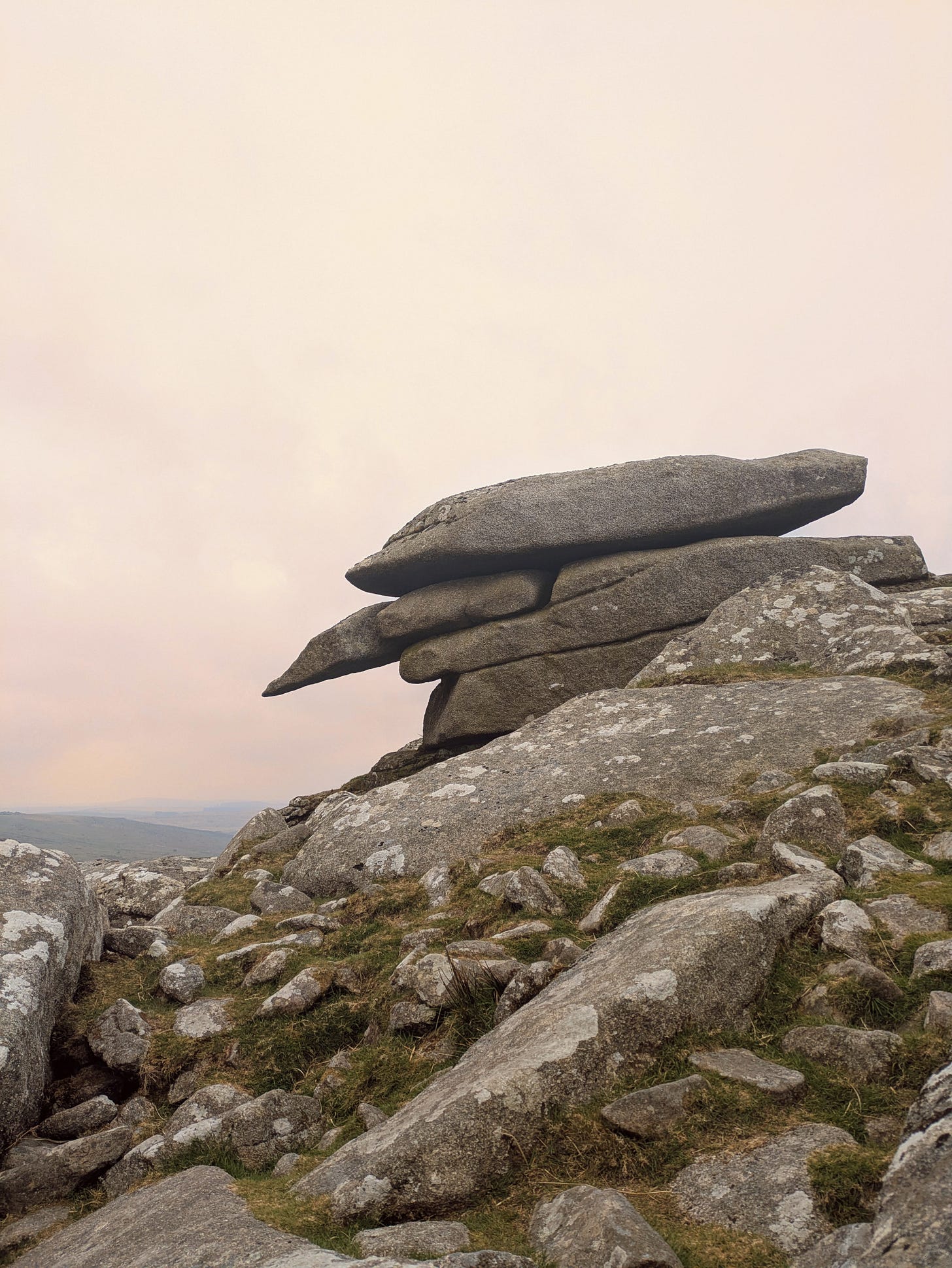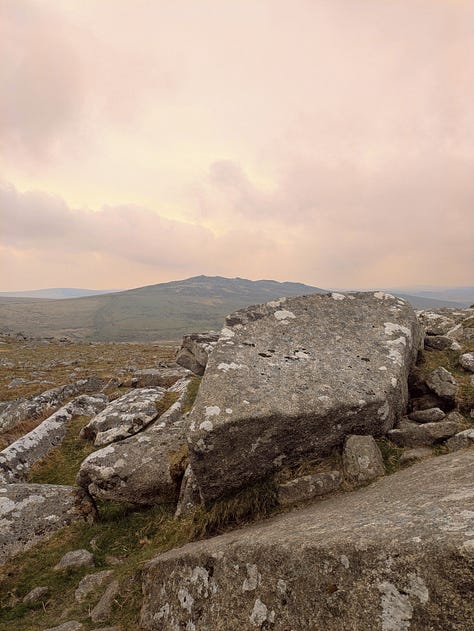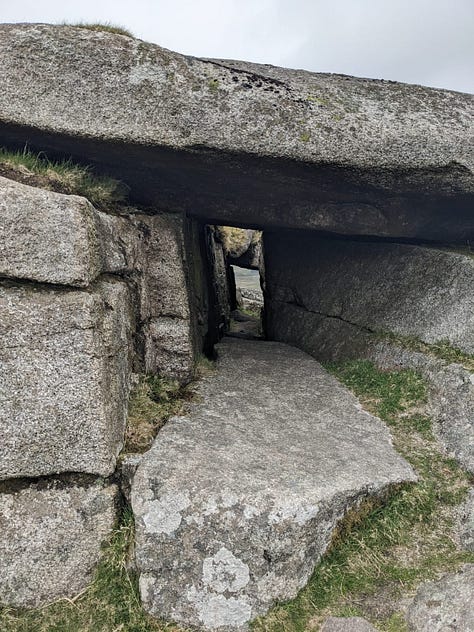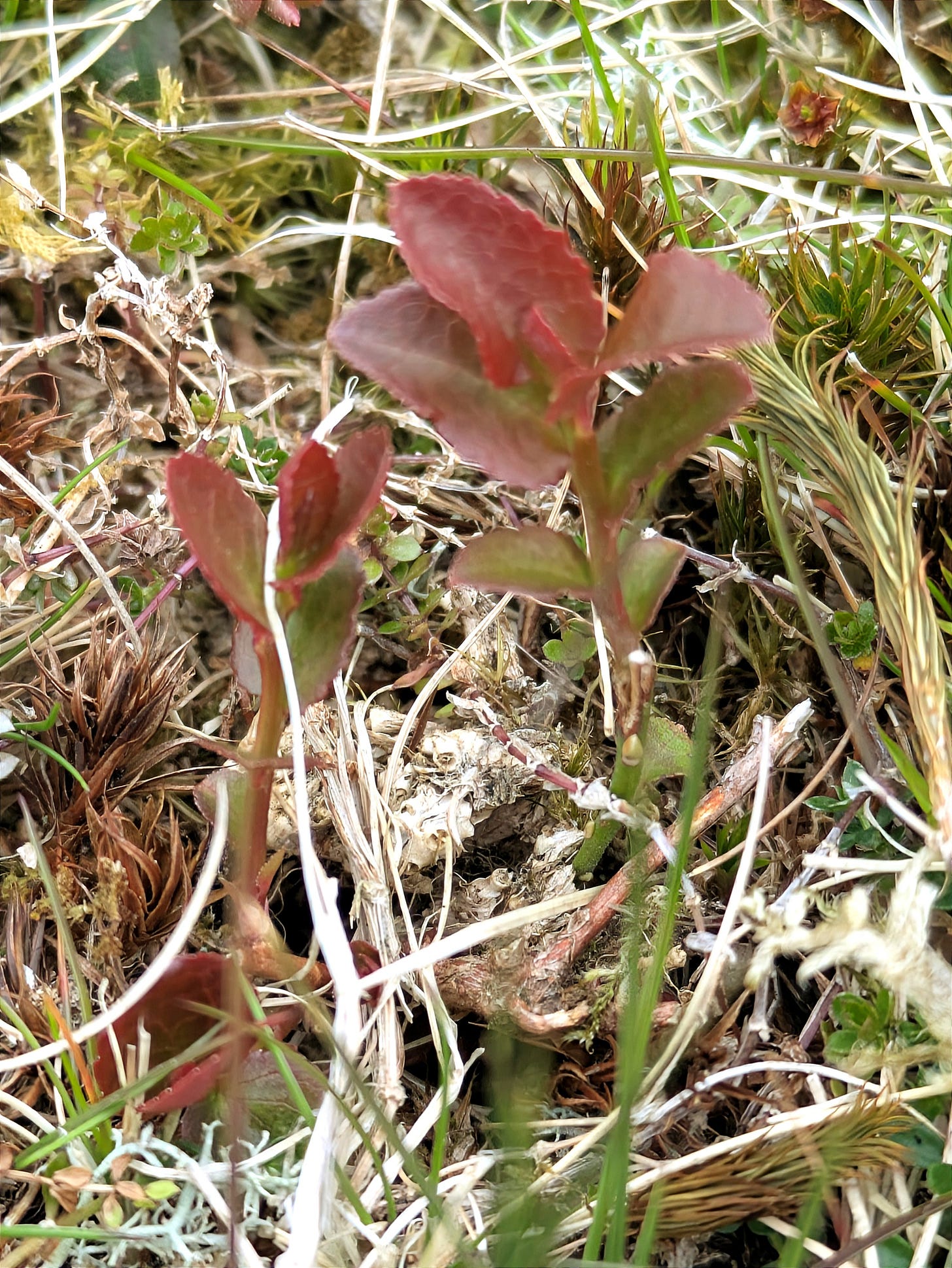
The trip wasn’t properly planned.
We were en route to the garden centre when we saw the sign. Without any warning, my husband took the turning. As someone known for their aversion to spontaneous road trips, I immediately made it clear that an adventure of this nature needed to be meticulously thought out.
I wasn’t wearing the right coat. I needed a wee. We were five minutes away from the coffee shop and the lovely garden plants I’d been thinking about all morning.
A fleeting memory of a local independent film warning against exactly this sort of malarkey only served to reinforce my displeasure about the detour.
“You’ve been saying for ages that you wanted to go… and now we’re here.” “Let’s just have a look from the car park….”
Bodmin Moor is a rugged, treeless, bleak, grey landscape.
Despite its reputation, I’ve wanted to visit this desolate place ever since reading Daphne Du Maurier’s Jamaica Inn at aged 13.
“No trees, no lanes, no cluster of cottages or hamlet, but mile upon mile of bleak moorland, dark and untraversed, rolling like a desert land to some unseen horizon. No human being could live in this wasted country, thought Mary, and remain like other people; the very children would be born twisted, like the blackened shrubs of broom, bent by the force of a wind that never ceased, blow as it would from east and west, from north and south. Their minds would be twisted, too, their thoughts evil, dwelling as they must amidst marshland and granite, harsh heather and crumbling stone.”
The moor is popular with walkers, who mostly go to climb Brown Willy (an anglicised twisting of the Cornish “Bronn Wennili” meaning Hill of Swallows.) The highest point in the county, it offers spectacular views across the designated area of natural beauty. An isolated expanse of wilderness, it’s been named a site of special scientific interest and one of only five (in the world!) dark sky parks. Haunting enough during the daytime, I can only imagine what it must feel like to camp out under the vast night sky and scare myself silly with tales of the Beast of Bodmin Moor and Cornish legends like that which surrounds the murder of Charlotte Dymond.

Murder on the Moor
Sunday, 14th of May, 1844. Matthew Weeks and Charlotte Dymond set out for a walk. Undecided about where they would go, it was noted that Charlotte implied she wouldn’t be back in time for the evening milking, whereas Matthew said that he would. Later that day, Matthew duly returned on his own, but when questioned about Charlotte’s whereabouts, replied that he “did not know.”
The following morning, with Charlotte still missing, he was further pressed about their outing. He insisted that he had accompanied Charlotte to the edge of the moor, and left her to go on on her own. He then made his way in the opposite direction towards Halworthy, where he called in at the house of Sarah Westlake.
One week later, and nobody had seen hide nor hair of Charlotte.
Efforts were made to verify Matthews story, which when found to be untrue, triggered a frantic search of the moors. On Tuesday, May 23rd, a gang of men set out for the foot of Rough Tor where they found Charlotte’s body. Retracing their steps, the men found bootprints; evidence that Charlotte had not been on the moors by herself.
Matthew Weeks was arrested for murder and put on trial at the Bodmin assizes. After only 35 minutes of deliberation, he was found guilty. Shortly after, he was hung from the gallows in front of several thousand people who turned up to the macabre event.
181 years later (almost to the day!) Charlotte’s ghost is still said to be seen wandering the moor. The first reported sighting was in 1932, eighty eight years after her murder.
“A figure of a woman is seen on Brown Willie, looking over the moors, as one approaches. But when one gets nearer or goes around the other side of the Tor, there is no woman there.”
B.C. Spooner - Cornish folklorist
A Stunning Natural Habitat
As well as hiding some of Cornwall’s most intriguing prehistoric remains, the moor is home to a treasure trove of heathland, bogs and floral habitats. Below are a couple of examples of what can be found there….
Bilberry (Vaccinium myrtillus)
Bilberry tincture is a staple in my working dispensary. Popular in Russian folk medicine, it’s indispensable for all issues related to the eyes. It’s traditionally prescribed to help improve vision. This is partly due to the fact that it’s rich in anti-oxidants which have a protective effect in age related degeneration, as well as properties which strengthen the integrity of ocular blood vessels, and stimulate the cone cells responsible for perceiving colours like violet and purple.
As young students, a college friend and I decided to conduct our own (rather amateaur) experiment to put these claims to the test. Without making it explicit, she added bilberry extract to her husbands herbal formula for two months. You can imagine how surprised she was when he came back from a work trip to say that he had been to the opticians to get his prescription changed because the glasses he had been wearing for five years felt too strong.
Bilberries make a delicious herbal infusion when combined with thyme. A handful of berries (avoid the leaves) steeped in vodka for one week, makes a nice homemade tincture.*
*Sensible caution: It goes without saying that you should never take herbal medicines without consulting your medical professional. This is to ensure that you are taking the correct dosage and to avoid any possible contra-indications.
Cornish Path Moss
A type of moss that was first discovered in 1963, Cornish Path Moss is currently only found at three sites in the world (these are all former 19th Century metal mines including Phoenix United Mine, Crow’s Nest, on the edge of Bodmin Moor, and Mountain Mine at Allihies in Co Cork, Ireland.)
It has evolved to tolerate very high levels of metals in the soil, like arsenic and copper, which are toxic to most other plant species. Because of this special adaptation it is able to out-compete other plant species where the soils have high levels of these metals.



In Other News:
After a year away from my herbal practice, I’m delighted to share the news that my waiting list is once again open. The new practice is perfectly situated deep in the Cornish countryside, in the tranquil, healing space that is Wellness in the Wild.
With the sound of the bubbling stream, the low cooing of wood pigeons, and the floaty dandelion fairy parachutes gliding by, this magical glade is the perfect haven for restoration to happen.
The place itself is part of the healing.
Consultations are now available, however, due to the deliberately slow nature of my practice, spaces are very limited.
Bookings can be made through the website or by sending an email enquiry to sarah@alchemilla.co
Next week I’ll be out in the woods telling stories about the herbal folklore of St. Newlyn East. Our meeting point will be the 12th Century churchyard beneath The Cursed Fig Tree. If this sounds like your cup of tea, I’d love to have your company.
As a one person enterprise, I appreciate you taking the time to read to the end of my newsletter. I hope it has added a sprinkle of curiosity and joy to your day.
The whole point of this endeavour is to help revive the skills of the home herbalist, and keep the wonder of plant medicine and it’s stories alive and well in our communities. If you’re keen to learn more about kitchen witchery, or want to dive deeper into the more skilled aspects of dosage and clinical prescribing, a paid subscription makes a perfect self-care gift.
Are you a new reader? The following posts might pique your interest:
Thank you for supporting my work at whatever level it serves you.









Thank you for sharing. I am going to make and try bilberry tincture for improving my eye sight.